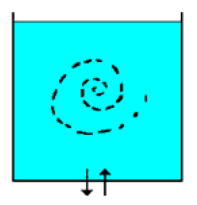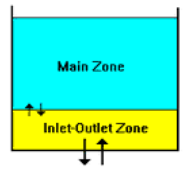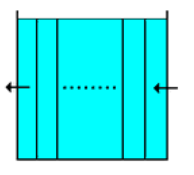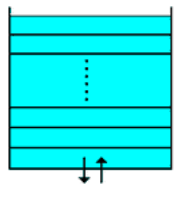EPANET - Water Quality Analysis - Tank Mixing Constructors
EPANET can use four different types of models to characterize the mixture in storage tanks.
- Fully Mixed - This mixing model assumes that all water entering a tank is instantaneous and
completely mixed with the water already in the tank. It is the simplest way to assume mixing behavior, it requires no extra parameters to describe it and seems to apply very well to a large number of installations that operate in fill and draw mode.

- Two Compartment Blend - This blend model divides the available storage volume in a tank into two compartments, both of which are totally mixed.
It is assumed that the tank inlet / outlet pipes are located in the first compartment.
The new water entering the tank mixes with the water in the first compartment.
If this compartment is full, it sends its overflow into the second compartment where it mixes completely with the water already stored there.
When the water leaves the tank, it leaves through the first compartment, which if full, receives an equivalent amount of water from the second compartment to make up the difference.
The first compartment is capable of simulating a short circuit between input and output, while the second compartment can represent dead zones.
The user must provide a single parameter which is the fraction of the total tank volume dedicated to the first compartment.

- First In / First Out - This mixing model assumes no water mixing during your mixing time.
residence in a tank. The water packs move through the tank in a segregated manner, where the first pack in is also the first out.
Physically speaking, this model is best suited for deflector tanks operating with simultaneous entry and exit.
There are no additional parameters needed to describe this mixture model.

- Last In / Last Out - This mixing model assumes no mixing between water parcels
entering a tank. However, in contrast to the FIFO Plug Flow, the water packets are stacked on top of each other, where the water enters and exits the tank at the bottom. Physically speaking, this type of model can apply to a tall vertical pipe and
narrow with an inlet/outlet pipe at the bottom and a low impulse inlet flow.
It does not require any additional parameters to be provided.

Different models can be used with different tanks in a network.



